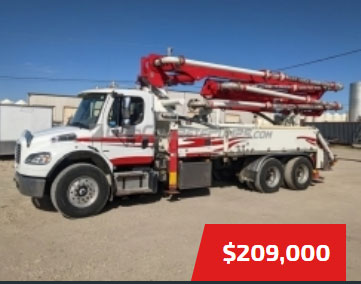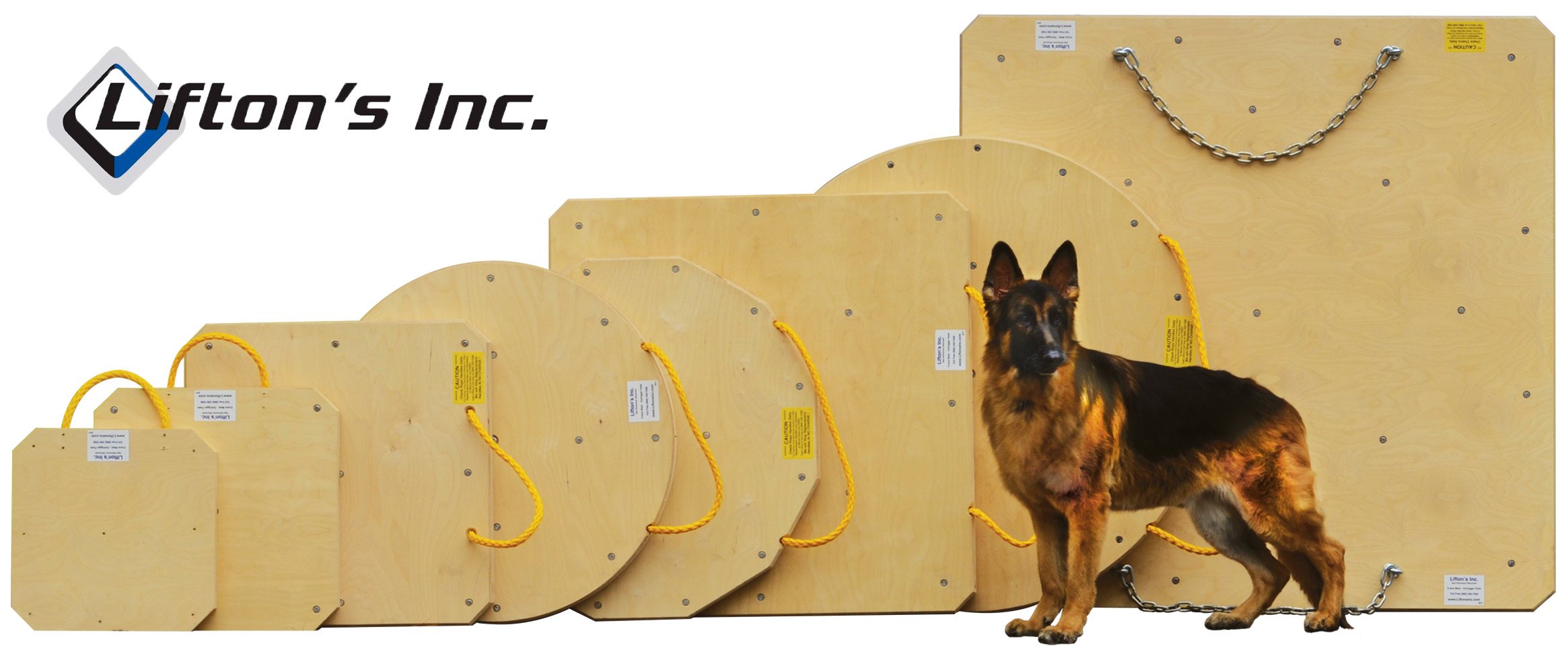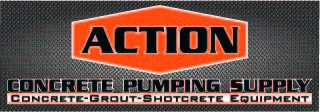Placing Booms the ultimate tool
Placing Booms, the Ultimate Tool
When used correctly and placed properly, placing booms can be the ultimate tool for the contractor. In this article we will discuss feasibility, job site and building placement, setup strategy, pumping techniques, and then finally the tear down. Placing booms date back to the early seventies. Not a lot was known about their capabilities back then. It was a learning experience for everyone involved including the contractor. With the technology available then, Placing booms where almost frightening. They were cumbersome in many aspects. Many with huge counter weights made of concrete. Just to get one set up and working was a challenge. But now the placing boom has entered a new era. These giants can be placed anywhere. They can free stand eighty to one hundred feet without tying off to anything. With the technology we have today, the Electronics, Steel, Pumping Techniques; even the concrete we pump today is high tech. Now the placing boom is a likely candidate for almost any commercial multi story building. Within this article I will pass on my knowledge to the reader. It is based on my lifetime in the industry with actual hands on experience. If there are any details that I can further discuss with anyone, I may be reached at TimSwindle@ConcretePumping.com. With that we can move on to the first part of this series.
Section 1: Placing Boom Feasibility
Is a placing boom feasible for a particular job? There is a lot to take into consideration with this decision. If the job can be pumped with a boom pump and a tip hose and maybe a few feet of system when needed, then it would probably be a good idea to pass on a placing boom. On the other hand if the engineers aren't willing to let hose drag on the deck, then this sheds a different light on things. Most placing booms are used on poured in place buildings. Where there are tensioning cables located in the decks as well as the beams. There is no margin for error on this type of building. If one of the cables are even slightly moved or dropped to the floor or drug side ways on the deck the cable, after being stretched, can snap straight and exit the slab leaving exposed cables.
For the Pumping Company, is there enough concrete to pump to make the project profitable? You must first know your costs; this will include both labor and equipment. To properly handle a placing boom job it takes a lot of man hours and you must have the right equipment. A good reliable placing boom, depending on how it is set up, can cost upwards of two hundred fifty thousand dollars. If you get a detachable placing boom, which I highly recommend, it can be somewhere around six hundred thousand dollars. Last but not least and actually the most important questions: Do you have the depth within your ranks to handle a placing boom? Do you have the knowledge? There is a lot of technique involved in this type of pumping. You had better do your home work first. The job site is not a good place to conduct experiments. The risk that is involved in this type of pumping is very high, so don't allow yourself to be blind to the fact when it comes time to bid the job.
The contractor also has a lot to take into consideration. There must be engineering in place for the placing boom. The hole for the tower must be laid out in such a way to reach everything and also satisfy the engineer. Then there is the crane, does he want to invest the time to move the placing boom back and forth between towers? This is not really a huge issue these days because it doesn't take that much time. If you have a routine it takes only about five minutes. I have personally done it in even less time. The next question is in regards to the pour schedule and the type of forming system. Can the columns be poured after the slabs? If so, then this equals production. Production is the single most important thing on a job site next to safety, which is certainly first. I have experienced jobs that cycle a floor a week and jobs that take two weeks, depending on the number of pours on each floor and the size of the building footprint.
Now, if the Contractor and the Concrete Pumping Company have decided that a placing boom is indeed feasible, then we can move on to the next topic.
Section 2: Jobsite and Building Placement
Where do you plan on locating the towers and the pump? Let's talk about the towers first. There are numerous options open to the contractor. First, make sure he knows the wide range of equipment available to him. Depending on the manufacture, there are a few different tower designs available.
Round towers, also called tube towers, come with the main tower length of approximately thirty-nine feet. This is the tower that the placing boom itself connects to. Also available with this system are extra tower sections with lengths of approximately twenty feet. In order to increase the length of the placing boom you must also increase the diameter of the tower. These towers range from twenty-four inches up to thirty-nine inches. The tube type tower also requires the stand pipe also known as the delivery pipe to be mounted on the outside away from the tower in its own opening. When determining the placement of the tower, keep in mind the different configurations available and where to use them. The tube tower can be used in a wedge mount configuration, making its way up the building through a predetermined hole in the floor. This is the most common. Another option is concrete blocks used as ballast to hold the thirty-nine foot tube vertical. Hardware is also available which allows the tube to be mounted to a vertical wall, check with the manufactures for more options.
Square towers, also called crane towers, are on a smaller scale than a typical crane tower. Usually around three feet eight inches square this system offers more of a modular arrangement. It incorporates both a ladder and the stand pipe inside the tower. The placing boom pedestal, with a four pin connection, sets directly on the top of the tower. Towers are available in lengths of ten and twenty feet. With the proper foundation these towers can free stand up to eighty feet without tying off. This tower can also be used in the wedge mount application. The towers can be raised through the building either by the tower crane or under its own hydraulic self-jacking system. Another option is on the outside of the building. The tie off system allows the contractor to stack the towers as high as he wishes. Still another application is the wall bracket; this option is used to climb the system up a core wall. Again, consult the manufacture for the different features and benefits. I personally like the modular tower system do to its versatility.
The next thing to consider is the pedestal. This is the part that actually connects the placing boom to the towers. Its other purpose is to house the hydraulic system along with the electrical system. Options that are offered with the pedestal include the electric power pack. With this you must install an electric cord which runs from the ground up through the building and into the pedestal. The next type to consider is the diesel power pack. It includes a small diesel engine which takes care of both the hydraulic and the electrical aspects.
Now that the towers and pedestal have been chosen we can move onto the placing boom itself. Just like regular concrete pumping trucks they come in many different lengths. So, choose one that best fits your needs. Make sure it reaches all corners of the building when you lay out its location. If you can't reach the corners then you may consider installing another tower. This will give you the coverage that is desired. Another thing to take into consideration is when pumping a hi-rise it is a good practice to install a kick block or more commonly called a surge block. It will be located directly below the tower on the ground floor. This is a permanent fixture until the concrete pumping has been completed. It is usually a block of concrete that has been formed around a five inch long sweep elbow. A forty-eight inch radius is usually sufficient. All of the stand pipe will be assembled on top of this elbow. Make sure that the towers are placed in such a way that the stand pipe makes a straight shot down the building and into the surge block and that there aren't any elbows in line with it. Remember to leave yourself enough room around the stand pipe elbow to build your form around it.
The surge block has been properly located, the towers are in line with it and the proper length of boom has been selected. It is now time to locate the pump. The first thing to look at is the job access. Locate the pump so that there is room for two trucks to discharge simultaneously. There are a few different reasons for this that we will discuss in more detail later. Situate the pump so that it is easy to hook the trailer kit to it. You will need a diversion valve or a shut off valve located inline somewhere as close as possible to the concrete pump. This valve is used to divert the concrete path between pipelines. This will also be discussed in greater detail in the techniques section of this article. Last make sure that the delivery pipe between the pump and the surge block is as straight as possible. The fewer radiuses the better. This leaves one more very important component. It is referred to as the candy cane. It will be located as close to the diversion valve as possible. It is the clean out system responsible for returning concrete back to the ready mix truck. It is a series of pipe and elbows assembled in such a way so a ready mix truck can back under it after the pour is complete. At this point all the concrete is then blown back through it with air leaving the system clean. The ready mix truck then leaves the jobsite with the excess concrete.
Section 3: Set Up Strategy
During the last section we touched on a small amount of the setup strategy. I would like to take this topic one step further and discuss a few things that I feel will help during the setup. If the initial setup is carried out properly there will be little room for error later, which translates into less labor cost. It also lessens the chance for catastrophic failure within the system. The first rule to follow is always use pipe with a wall thickness of at least point two five zero (.250) on the deck and up at least one hundred feet. This varies on the vertical depending on the height of the building. A wall thickness of point one eight eight (.188) works fine for the rest of the way up the building.
Look ahead and consider the weight of the concrete and the pipeline sitting on top of the surge block. If the block of concrete is not tied down it is certainly going to move during the course of pumping. This takes a small amount of fabricating back at the shop but will be worth it. Locate an eight foot long channel iron. Find the center and cut the sides so that it can be heated and bent into a right angle. Weld the cuts together at this point, they should be closed. Lay the channel flat on the floor and place the elbow in such a way as to insure that everything is square. Weld the elbow to the channel. Locate several twenty foot long, quarter inch thick by three inch angle. You will be using this through out the building. Cut two pieces thirty-six inches long and lay them on the floor. Stand the elbow up vertical and set it on top of the angles so that it is at right angles, weld the channel to the angles. You now have a floor frame that holds the elbow in the upright position. Locate the stand pipe elbow in the predetermined position within the building. Drill four holes in the concrete around it near the corners. Drive four number four or number five rebar into the holes. They should be thirty-six inches long. Insert shims under the angle iron to insure that the five inch bolt clamp has proper clearance between the floor and pipe. You can now build the form around your elbow for your surge block. This is no more than a box, three foot cubed. Tie the rebar between the corner bars and tie everything together, don't short yourself on this step. The more rebar the better. Without it the surge block will certainly fail.
The extra angle iron will be used for the floor frames that hold the stand pipe vertical. These are no more than a piece laying flat on the floor with bolt holes in it. You may wish to use U-bolts to fasten the pipe to the angle and then bolt the angle to the floor. One or two bolts on each end will hold it in place just fine. These especially work well when you are going up the building with the towers through a trash shoot or any other hole that remains open. This completes the system all the way up to the bottom of the towers.
Let's now discuss a building that is utilizing two towers and how we plan to mount the diversion valve. If located outside the building dig a hole close to three foot square and down in the ground far enough to except one half yard of concrete. Insert the anchor bolts into the valve. They should be at least three-fourths of an inch in diameter and as long as you can get them. Tie the anchor bolts to each other using rebar. Now the idea is to suspend the valve over the hole. You can accomplish this by driving two by four stakes in the ground at the corners and placing the valve on top. Once this has been completed you can add more rebar. At this point you are ready to pour concrete. When the building is completed this block can easily be attached to via the bolts and disposed of. Keep in mind that each building scenario is different and the setup may be adjusted accordingly. For another setup you might be able to bolt the valve to an interior wall, or maybe to an interior floor. If you decide on the floor you might want to fabricate a larger frame to make the footprint larger on the valve this will stabilize it much better.
How you plan on using the diversion valve determines the strategy for laying the system. Some pumping companies use the valve to switch the flow of concrete between towers. I personally use it for diverting the flow back to the candy cane for system blow out. This means that there is only one pipeline ran from the valve into the building. This pipeline will have a long sweep elbow on the end; it is then loosened and turned manually in order to divert the flow from one tower to the other. The idea is to make sure there is no concrete build up in the system. The operator can check this each time he redirects the elbow. If the system is closed all the time then there really isn't any way to check and make sure that it is clean.
When laying the system between the valve and the surge block, start at the surge block and work your way back to the valve. Insert chairs under each bolt clamp and secure them to the floor with bolts. You will need a make up pipe just before the elbow, heading back to the pump. This will insure a nice fit when reconnecting the elbow each time you need to divert the flow of concrete. The interior is now complete and if done properly the first time should not be a threat later.
We now must setup the pipe between the valve and the concrete pump. I personally like to pour a small block of concrete around the pipe about three feet away from the valve. This takes excess weight away from the valve and transfers the line surge back to the pump. Now, if you did your calculating right, hooking the concrete pump to the valve should be simple. Design this part so that when you drive forward with the pump you close the gap between the trailer kit and the pipe. All that is left is the bolt clamp and some wood inserted under the pipe to support the system.
Last but probably the most important part of the set up is the candy cane. Not really a lot to say here except make sure your blow out pipe is setup running up hill, if it isn't then it's like pumping concrete down hill. You're asking for big problems when the time comes to clean out the system. Design your candy cane so that when the ready mix truck backs under it you can then attach a five inch hose at least eight feet in length to it. Make sure the hose has only one end to clamp to. The end that goes into the mixer must be free from any catch edges. To bring this section to a close, if everything has been assembled properly and you are using the proper concrete pump with as low surge as possible. You are now set up to handle large volumes of concrete with ease.
Section 4: Pumping Techniques
I am not going to say that the technique that I use to pump concrete is the best, but it is based on my past experience. It has allowed me to pump trouble free for years. If you see something you like use it, if it works for you then please pass it on. If it doesn't work for you well then pass that along as well. Every concrete pumper I have ever met has his or her own way of doing things. If any of this section or any of the previous sections seem confusing, let me know and I will explain it better. I am only going to focus on concrete pumping through a placing boom here; any other type of pumping takes on a whole new set of rules.
The operator on the pump is handling the most stressful part of the operation. He must take into consideration a whole spectrum of different details. These details include the mix design, the ready mix plant from which it was loaded. Sometimes it comes from many different plants. Some loads are harder to pump than others. How old is the concrete? Does it have additives such as accelerators or retarders? Is it a rocky mix, can he even pump it? How much slump is it going to loose when he pumps it thirty stories up. Believe me, the list gets larger. At this point all eyes are on the operator and he had better have a good handle on it. When he does, the pour will go just fine and he will enjoy it. If he is thinking about other things while he is pumping then the whole operation is in the highest risk zone, a place the owner never wants to be.
We are ready to prime the system, but first look at the rear end of the pump and make sure everything is tight. Count the different things to check; from then on you can look, touch and count to insure that it has been completed. This is all apart of your routine. The boom is all unfolded and ready to go and you have checked your radio to make sure you and the operator upstairs are both on the same channel. Communicate with him as much as possible during the pour, this way you will stay on the same page.
Ok back the trucks in. You'll notice I said trucks; not one but two at a time. Backing in just one is the fastest way to mess up a good prime. If the jobsite doesn't have enough room to allow you to back two in at a time then make sure after you have pumped the grout into the system that you have stopped the pump after the grout has penetrated the vertical pipe. We will base this strategy on the two truck scenario. At this point you have them both backed in and ready to go. What do I mean by ready to go? You have gotten up on the ladder and looked at the mix. Now is the time to get it slumped the way you want it before it hits the chutes. A word of caution, don't ever let anyone dump the concrete into the shoot to look at it. This can cause big problems. Let's consider the one yard of grout first. It must be wet enough to lubricate the system all the way up to the placing boom. So make it wet, you can't hurt it.
Imagine for a moment if the grout was discharging, traveling down the shoot and the flow was stopped. If the grout started to crack apart and move on down the shoot then it is to dry for what we are doing. After doing it once or twice you then get comfortable with it. Now check the truck with the concrete and make sure it is at the high end of the specs, a little to the wet side. While they are revving the trucks add water to your hopper almost to the top of the cylinders, depending on what brand of pump you are using.
Explain to the ready mix drivers how you plan on priming the system. You start your pump cycling it slow and start discharging the grout, let him fill your hopper full and then turn him off. This whole time you never turn your pump off. When you get it pumped one half of the way down turn on the concrete this will blend the two together. Now increase the volume to the desired speed and at this point don't turn it off until you get to the top. You will either be pumping the grout onto the deck, or if you are pumping columns, it will surely be into a crane bucket. The reason you only used a hopper full of grout is to cut down on the mess upstairs on the deck. Besides that, it doesn't take a lot to lubricate the system. You are now primed and ready to pump.
While pumping keep an eye on the hydraulic high pressure gauge and stay in tune with it. It will tell the whole story about the mix you are pumping. Once you have started pumping and everything has settled in you will then know about where the pressure should be, this will also help you determine the slump of the concrete. If the mix looks the same but the pressure is up somewhat then you might add a shot of water or just keep pumping. Throughout the day you will be starting and stopping the pump. When starting it, turn the volume down a bit so that when you take off pumping you don't get that initial surge. It is very hard on the system. After you get started you can then turn it back up again.
You are now getting close to the end of the pour. Keep the second to the last truck and back him under the candy cane. Put the five inch hose on and make sure that it is secure. Turn the drum slowly in the charge direction. If you have fabricated a flimsy version of the candy cane, install a safety chain and fasten it to the truck. Everything must fit tight you don't want the hose to exit the drum while blowing the system out. At some point during the day you should have mixed up two buckets of pump primer. Before we blow out the system we will pour it into the prime port on the diversion valve, by this time you should know about how much concrete you have in the system. The operator up on top should be instructed to turn you off when he still needs that amount on the deck. Stop the pump now and add water to the concrete if needed, the concrete you are wetting up will never see the end of the boom. Start pumping again when they are ready and try to keep the hopper down but do not allow it to pump air, this will separate the concrete and turn your clean out into a disaster. They have told you they are all done upstairs, now you should have just a small amount in the hopper. Take a few strokes in reverse and this will bring the concrete back down the boom so that there isn't a mess when the boom is lowered for the blowout. When this is done tell your partner to prepare for the blow out. He swings the boom into position and takes the system off. After the system is removed he cleans the end elbow out making sure there is no concrete left inside it. He then takes a wet sponge and pushes it into the elbow, hooks up the blow out cap and stands by for the command from down stairs. The pump primer is poured into the port and now it is ready to blow out. The signal is given to blow out and at that time the air is turned on and the valve is switched over. Being in time with each other is important. You really don't want the clean out sponge to stop after it has started moving. If you have set your candy cane up properly then you should be able to blow the sponge back with full air until it exits the end of the hose. After the first sponge has made it through then send one more. Put water in first this time and then the sponge, this will ensure the system is clean. Now insert a sponge into the valve and run the pump in reverse. This will clean the pipe between the pump and valve. Make sure the air is off and unhook your blow out hose. The ready mix truck is free to go. Take off the bolt clamp and wash out your pump. Meanwhile, the operator upstairs folds up the boom and heads down to help with the minor cleanup details. You have now completed the last pour on the building and it is time you dismantle the entire system.
Section 5: Placing Boom Tear Down
The first thing to do is get the placing boom off the building and back on the pump. Hook up the proper rigging and get ready to pick up the boom. Disconnect all of the hydraulic lines except for the lines for the main section up and down. Pull the safety pins that hold the boom onto the pedestal, this will all depend on the brand of equipment you are using. Explain to the crane operator how much the load weighs, this has all been predetermined.
Have the operator load the crane to almost the desired weight, a few hundred pounds less will work fine. Start moving the main section up and down very slowly adding a little more weight on the crane. At this point the boom will float off of the pedestal. Turn the power pack off and disconnect the remaining lines. Fly the boom down to the truck downstairs. The truck should have been previously set up and leveled. When you get it close to where it goes, connect the hydraulic lines that operate the main up and down. Set the boom down on the head, you might need to operate the main up and down a little to get the boom to set down properly. Take the weight off the crane and disconnect from it. Connect the rest of the lines and you are finished. Make sure you lower the boom the rest of the way into the cradle before driving.
Now connect on to the pedestal with the crane, drive the corner pins out and fly it down to the awaiting trailer. Depending on how much room is left between the crane and the top of the tower; you may or may not be able to fly the towers out in one piece. If you can't, then simply take the corner bolts out and fly the towers a section at a time. Make sure you have also taken the bolt clamps off of the pipe inside the tower so that it comes apart easily.
Most commonly the material lift has been assembled to a point just below the top deck. This will make transporting pipe down quite easy. Take the stand pipe down one at a time. Move the pipe over to the material lift and leave it there. When the entire pipe has been dismantled then load it on the material lift stopping at each floor.
Jack hammer the concrete away from the elbows taking extra care not to penetrate the elbow with the hammer steel. If the building is rather small with low yards, then mark the deck pipe on the top so that you can use it on the next job. On the next set up just simply rotate it. The more common practice is to use new pipe on the deck and move the used deck pipe to the vertical.
Dismantle the rest of the system along with the diversion valve as well as the candy cane and the job is complete.
By Swindle, Tim Published by ConcretePumping.com




















.jpg)
.gif)

.jpg)








.jpg)









